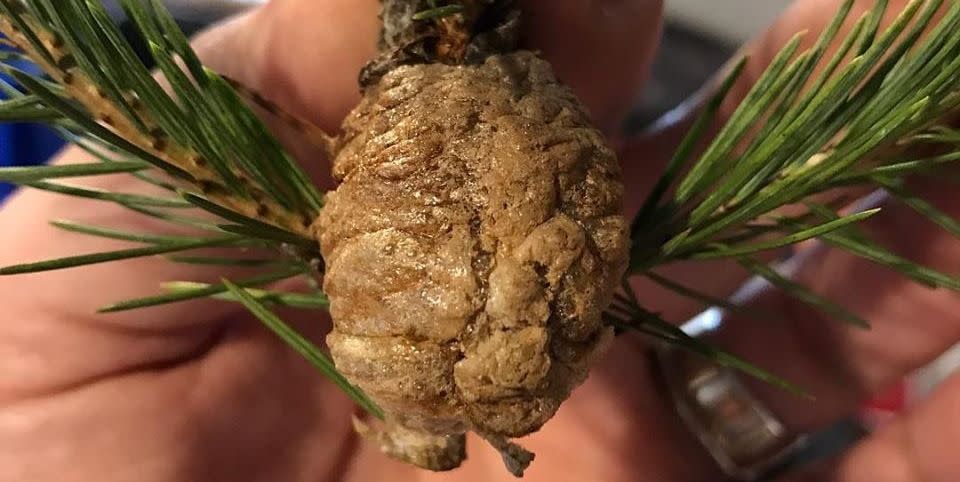Um, Is That a Praying Mantis Egg Sac Hanging Off Your Christmas Tree?

Picture this, if you will: It's Christmas Eve, and your loved one are gathered around the tree. Every present is wrapped, the Bing Crosby is playing, the kids are bubbling over with excitement, your mug is fragrant with eggnog. Then, you hear a tiny crack. Is that the sound of reindeer landing on the roof? No, it's the sound of an egg sac softly breaking open on your Christmas tree's branches. It's the arrival of 200 baby praying mantises, and they are hopping all over your idyllic holiday scene.
I'm sorry to horrify you, but it's entirely possible. A recent Facebook post by the government of Erie County, Ohio, warned its residents that the mysterious masses they might spot on their Christmas trees are not collections of sap or some other organic tree growth, but often, egg sacs filled with baby praying mantises.
The county recommends clipping off the sacs and placing them in your garden, but what if you don't have a garden, and what if you're (understandably) more concerned about your own family's welfare than that of the baby insects? Yes, they're weirdly beautiful, but EW.
Before we freaked out further, we turned to an entomologist (that's an insect expert) to find out if this warning is even legitimate. Facebook has been known to promote some fake news these days, after all. The bad/good news is that it's totally possible, says Sydney K. Brannoch, Ph.D, a postdoctoral scholar at the University of Washington, Seattle, and a person who literally wrote her doctoral thesis on praying mantises.
Related Video: Praying Mantis Attacks Phone
"Yes, praying mantises have been known to deposit egg cases (called ootheca/ oothecae) on various types of vegetation, including the trees that we love to decorate at Christmas time. While I have yet to have a Christmas tree with an ootheca on one of its branches, it is certainly a possibility," Brannoch tells House Beautiful. "Depending on the species of praying mantis, the ootheca could have approximately 100-200 eggs, which could certainly hatch earlier than expected after spending a month or so in someone's warm home." When left to their own devices, praying mantises usually hatch in the late spring or early summer.
So what, exactly, should a person do if they find one of these sacs on their tree? Indeed, you could clip it off and place it on an outdoor branch, shrub, or in the garden, Brannoch says. "If you do have an emergence of praying mantis nymphs in your home due to an unseen ootheca, do not panic!" she says. "Gently sweep them up, using a broom and dustpan, into Tupperware before placing it into the freezer (to euthanize the mantis nymphs) or to transfer to a terrarium to feed and play with until the summer when you can release them back into the wild."
Well, when put that way, the whole praying mantis explosion almost sounds.. cute? Like a heartwarming activity for the whole family? Still, you might want to inspect the branches of your tree before you haul it home (or tonight, if you've already set it up). Of course, an artificial tree doesn't offer these kind of concerns at all, and it sounds pretty nice right about now. Happy Christmas, sorry about the nightmares.
Follow House Beautiful on Instagram.
You Might Also Like

